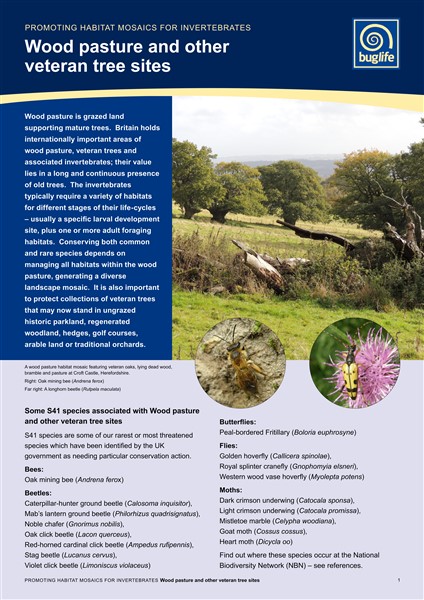Wood pasture is probably the continent’s oldest land management technique and has abundant wildlife and species diversity. It persisted in the UK longer than most other parts of Northern Europe and this is largely due to our history and feudal system, especially in terms of Commoners’ rights which were commonplace until the 18th century. Some of these Commoners’ rights are still active today at sites like the New Forest in Hampshire, which is the reason why very little landscape change has occurred there over the past centuries, perhaps even the last millennia.
Wood pasture is a sylvo-pastoral system, i.e. sylvo – trees and pastoral – grassland. Its management usually consists of pollarded or open grown trees and grazing animals in order to produce a variety of products and food. The ratio of trees and grassland varied greatly across the country and at individual sites over time, mainly based on needs but also due to royal, religious and aristocratic control. Relics of this system can still be seen today at sites like Ashtead Common in Surrey and many of the UK’s parklands are modified forms which have survived due to continued ownership by one family, for example Moccas Park in Herefordshire.
Dallington Forest is a wood pasture recorded in the Doomsday book and was owned by the clergy for a large part of its history. Prior to the Norman Conquest, Edith Godwinson, sister of King Harold, owned land in Dallington and so it may have been a royal hunting forest and likley remained as such under Norman rule. It was once on a par with today’s well-known Ashdown Forest and is very similar in character. Over time, it has grown and shrunk: at times it included parts of Burwash and Brightling. Today’s Dallington Forest on the OS map is a much smaller remaining part, albeit the likely core of the original forest. Ecologically, it is best described as a wooded heath: a sub type of wood pasture that is identified by its acid soils and corresponding flora and fauna.
Historically, wooded heath was a common habitat type in the High Weald, but large parts have now been converted to agriculture and forestry uses. The Enclosures Act (1773) also influenced landscape changes, creating the field, hedgerow and woodland structure and habitats that now define it. Despite this change, some veteran hedgerow trees within fields of unimproved pasture replicate to a degree the wood pasture vegetation structure, thus continuing to support some of the more common species associated with the former habitat.
The remaining Dallington Forest is currently owned by a few large landowners, much of which has unfortunately been converted to planation forestry. There is also limited public access through the site. Some ancient and veteran trees remain but on the whole it is a degraded habitat. Perhaps, one day, grazing might for some reason be reintroduced and a new generation of veteran trees would grow, which would in turn restore the habitat and allow the associated wildlife to thrive.
